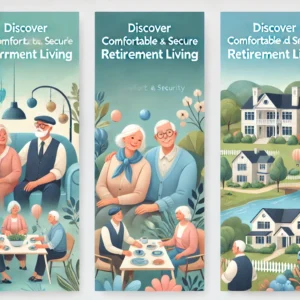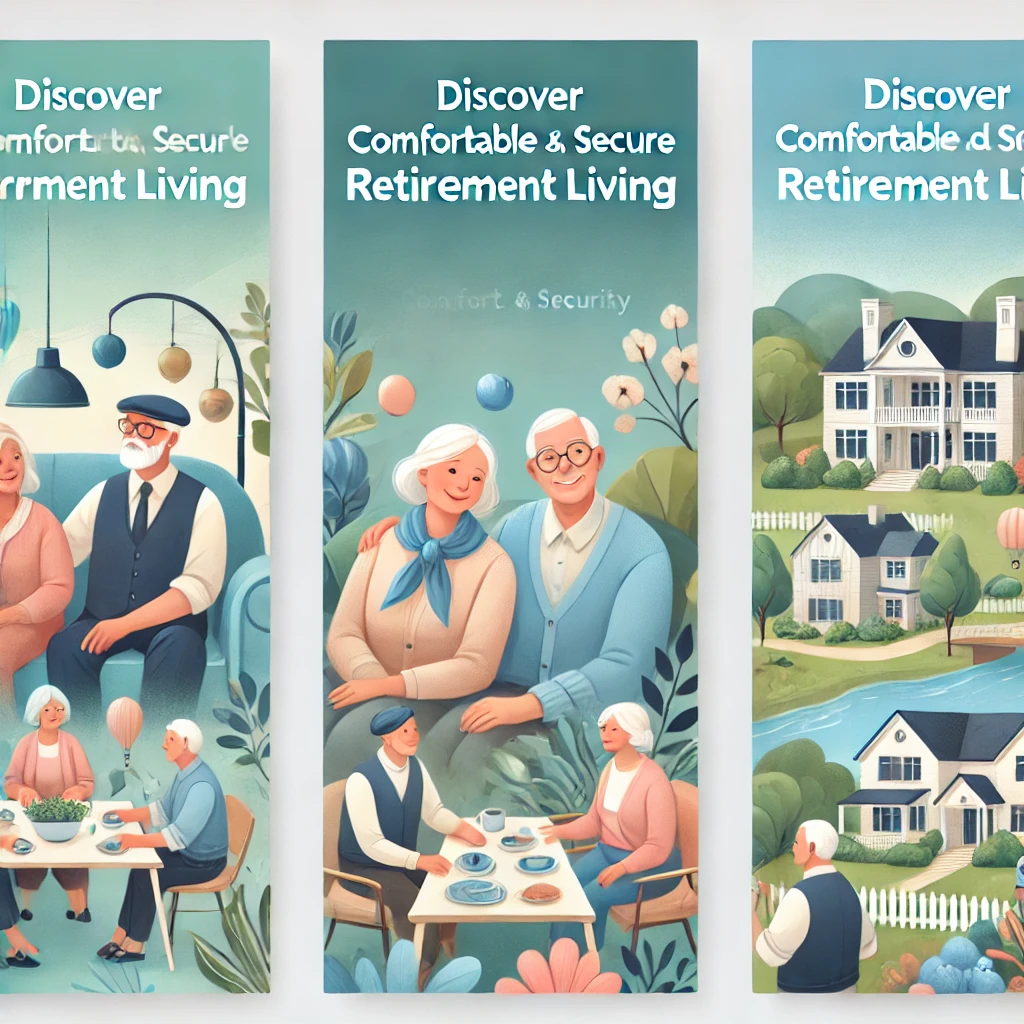Choosing the Best Retirement Homes: A Complete Guide to Comfortable Senior Living

Retirement homes are more than just places to live—they’re communities where seniors can enjoy a vibrant, secure, and fulfilling lifestyle. Choosing the best retirement home is a significant decision that requires careful thought and planning. In this guide, we’ll explore what makes a great retirement home, the benefits of senior living, and the latest trends in retirement communities.
What Are Retirement Homes?
Retirement homes, also known as senior living communities, provide tailored environments where older adults can enjoy independence while having access to support when needed. These homes offer private living spaces, social activities, and essential services like housekeeping and healthcare.
Key Features of Retirement Homes:
- Comfortable accommodations (private apartments or shared rooms).
- On-site amenities like dining, fitness centers, and recreational activities.
- Access to healthcare professionals and emergency support.
Benefits of Living in a Retirement Home
- Safety and Security
- 24/7 staff availability for emergencies.
- Secure environments to ensure peace of mind for residents and their families.
- Social Opportunities
- Regular activities and group events foster connections and friendships.
- Reduces loneliness and promotes mental well-being.
- Convenience
- Services like meal preparation, transportation, and housekeeping.
- Allows residents to focus on enjoying life without daily chores.
- Access to Healthcare
- On-site medical professionals and regular health check-ups.
- Proximity to hospitals or specialized care centers.
Types of Retirement Homes
1. Independent Living Communities
Ideal for active seniors seeking a maintenance-free lifestyle with optional support.
2. Assisted Living Facilities
Provide help with daily activities like bathing, dressing, and medication while encouraging independence.
3. Memory Care Facilities
Specialized for seniors with dementia or Alzheimer’s, offering secure environments and cognitive therapy programs.
4. Continuing Care Retirement Communities (CCRCs)
Offer a continuum of care, allowing residents to transition from independent living to skilled nursing as needed.
5. Skilled Nursing Facilities
Focus on seniors with chronic conditions or rehabilitation needs, providing round-the-clock medical care.
How to Choose the Best Retirement Home
1. Identify Personal Needs
- Determine the level of care required (independent, assisted, or skilled nursing).
- Evaluate lifestyle preferences, such as hobbies or social activities.
2. Research and Visit Multiple Facilities
- Take tours to observe cleanliness, amenities, and staff interactions.
- Speak with current residents to gauge satisfaction levels.
3. Assess Costs and Payment Options
- Compare pricing structures, including entry fees and monthly rates.
- Check if the facility accepts Medicare, Medicaid, or long-term care insurance.
4. Review Licensing and Accreditation
- Ensure the retirement home meets local and national standards.
- Look for certifications from trusted organizations like CARF or JCAHO.
5. Plan for Future Needs
- Choose a facility that accommodates changing health or mobility requirements.
- Consider CCRCs for seamless transitions.
Top Questions to Ask When Visiting Retirement Homes
- What is included in the monthly cost?
- Are pets allowed?
- What is the staff-to-resident ratio?
- What types of activities are available?
- How are medical emergencies handled?
Emerging Trends in Retirement Homes
1. Smart Technology
- Integration of smart home devices for convenience and safety.
- Examples: Voice-activated assistants, automated lighting, and fall detectors.
2. Eco-Friendly Living
- Sustainable building materials and green practices are increasingly popular.
- Examples: Solar panels, community gardens, and recycling programs.
3. Wellness Programs
- Emphasis on holistic health with yoga, fitness classes, and nutrition plans.
4. Intergenerational Communities
- Programs that encourage interaction between seniors and younger generations.
Common Myths About Retirement Homes
Myth 1: “Retirement homes are only for the sick or elderly.”
- Many communities cater to active seniors who want a vibrant lifestyle.
Myth 2: “They’re too expensive.”
- Options exist for various budgets, and the cost often includes valuable services.
Myth 3: “I’ll lose my independence.”
- Modern facilities focus on empowering residents to maintain autonomy.
Conclusion
Choosing the best retirement home is a critical decision that can greatly enhance quality of life. By understanding your needs, researching options, and staying informed about the latest trends, you can find a community that feels like home. Whether you’re planning for yourself or helping a loved one, this guide is your first step toward a brighter, more comfortable future.


